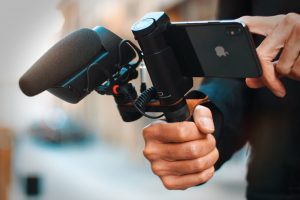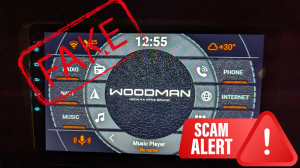First, for those of you who are newcomers to photography, a definition of terms: a single-lens reflex camera, or SLR, refers to a camera that uses a system of mirrors so that you see, through the viewfinder, exactly what the lens sees. Digital technology has made this feature somewhat less important to the consumer market (since a screen can immediately show you what you shot), but for professionals and high-end consumers who want the best gadgets possible, digital SLR or DSLR is still the standard.
Other types of camera are being developed that also take great pictures (such as the mirrorless interchangeable-lens camera or MILC), but as of this writing a DSLR generally still offers you the highest quality of any class of camera, as well as all its old advantages like the flexibility of interchangeable lenses and the versatility of manual control. If you know what you’re doing, you can produce any kind of image you need.
So what are the factors to consider if you want to find a DSLR that’s right for you?
1. Price
This is the most simple and obvious factor, and a determinative one for most purchasers. You can expect a DSLR to cost $350 and up. Naturally, you won’t find the best cameras in the low end of that range. The latest standard DSLRs from the major manufacturers tend to retail around $600. As with most products, you can get as fancy a version as you want to pay for: there are professional DSLRs that cost over $10,000.
Entry-level DSLR buyers, however, should plan to spend no more than $600 (plus any additional lenses, which can be expensive; many serious photographers scoff at the zoom “kit” lens that comes with a camera).
2. Resolution
The importance of megapixels is sometimes overestimated by those who want a nice and simple indicator of a camera’s quality. But as a rule of thumb, you shouldn’t settle for anything less than 10 MP these days.
3. Sensor size
Arguably as important as the resolution is this measure of the size of the photosensitive surface area that gathers light within the camera. The professional standard here is “full-frame,” meaning the size of a 35mm strip of film in the old days. Unfortunately, this is the single biggest factor that drives camera prices, and a full-frame camera will be in the thousands rather than hundreds of dollars. Your realistic options will be sensors in the Advanced Photo System “APS” range (APS-H and APS-C) versus the smaller “four thirds” size. But honestly, any of these should be fine unless it’s critically important that you blow your photos up into huge prints. These consumer sensor sizes should still give you good quality up to 11×17” and beyond.
4. Video
Does it shoot video? A few DSLRs on the market do, some even in HD. Most don’t, and for some people that’s no problem at all. It all depends what you plan to do with your camera.
5. Buttons
In general, you shouldn’t worry too much about what individual features the camera may or may not have — all DSLRs by definition will have more than enough fancy whiz-bang capabilities for any amateur photographer.
Finally, in the spirit of full disclosure, let me end this article on a personal note. I shoot with a Pentax K-x, for the following reasons: it takes AA batteries (rather than specialized camera batteries, so I can get some quick even if I’m not near a photo store), it shoots HD video, it comes in a huge range of colors (mine is cherry red!), and it was at an affordable price point for me (around $500).
The K-x model has been discontinued, but you can still find them used. It’s been replaced by the K-01, which is a MILC. Luckily, unlike most MILCs from other brands, it is still compatible with the same lenses that fit Pentax’s old DSLR (and even earlier SLR!) cameras. This reflects well on Pentax as a company, in my opinion, showing that they’re not out to rip us off. That said, Nikon and Canon manufacture equally good, if not superior cameras. So look into it as thoroughly as you can; a high-quality digital camera is a substantial and exciting investment, and you want to make sure you get one that will make you happy.
















All new cameras these days have video modes (except the medium format cameras).
APS-H sensor size: Canon’s 1D series cameras have the APS-H sensors and are professional cameras. So unless someone buys second hand, you can’t get these cameras cheap. It is for the rich amateur or for the professionals. My 1D Mark IV which has an APS-H sensor costs 5000 USD (Rs. 2.4 lakhs when I bought in early 2010).
Canon and Nikon are the market leaders in cameras. Even the mighty Sony is unable to beat these two (though Sony manufactures sensors for Nikon cameras). All other brands follow them.